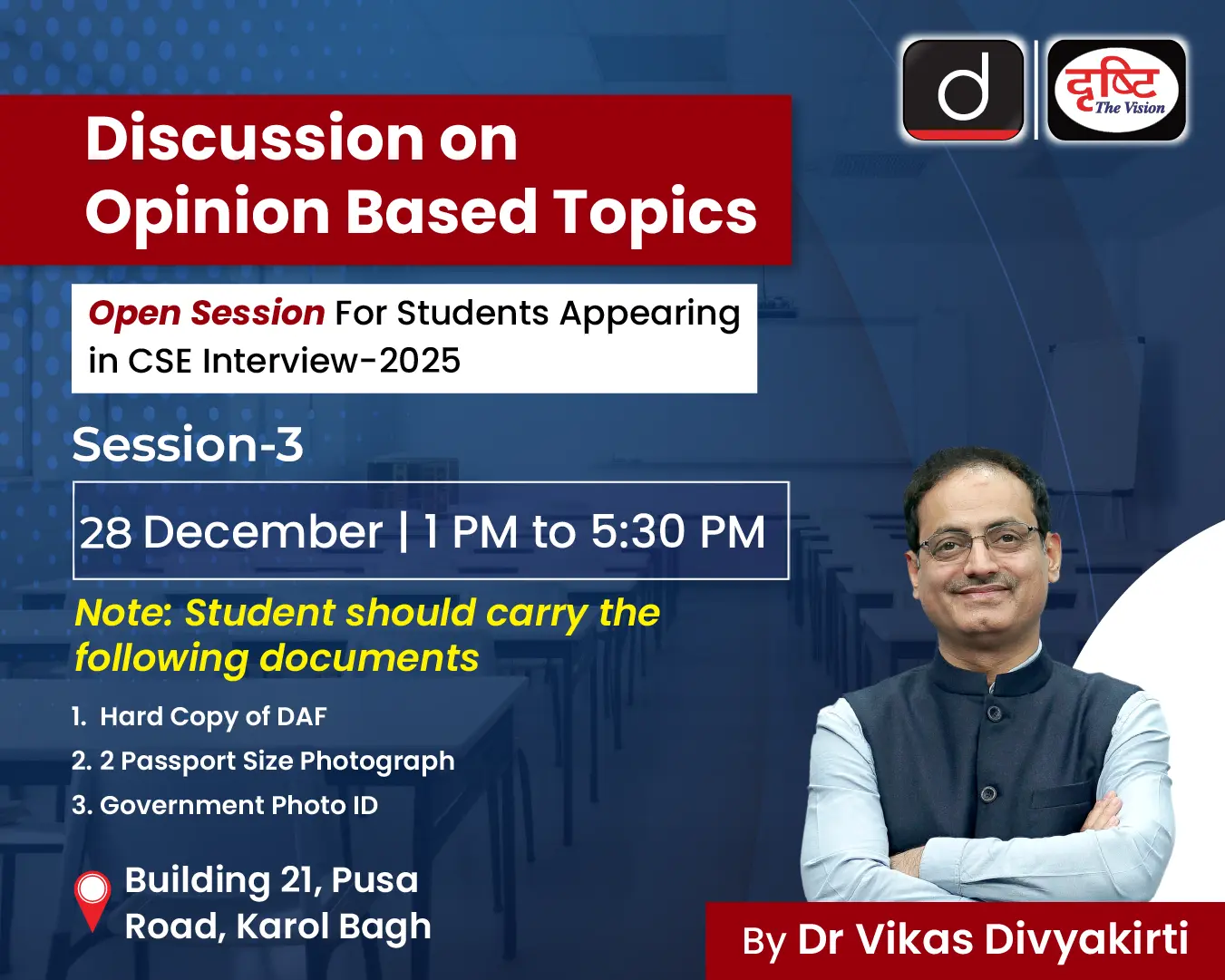Indian Polity
Right To Dissent
This article is based on "The pressing need to adjudicate, not mediate" which was published in The Hindu on 19/02/2021. It talks about the significance of the Right to Dissent in a democracy.
Recently, in the pretext of farmer’s protest, a review petition on the Shaheen Bagh protest has been filed in the Supreme Court. The court refused to review its earlier verdict which declared that there is no absolute right to protest, and it could be subjected to the orders of the authority regarding the place and time.
This brings into focus the tug-of-war between morality and state security, freedom, and responsibility. On one hand, it is the government’s responsibility to ensure that any protest should not turn into violent chaos. On the other hand, public protests are the hallmark of a free, democratic society, whose logic demands that the voice of the people should be heard by those in power and decisions be reached after proper discussion and consultation.
In spite of this dilemma, in order to preserve the democratic fabric of the Indian society, it is the responsibility of stakeholders in a democracy that all freedoms under Article 19 of the Constitution shouldn’t be seriously impaired.
Significance of Right to Dissent
- Fundamental Right: The Right to protest peacefully is enshrined in the Indian Constitution—Article 19(1)(a) guarantees the freedom of speech and expression; Article 19(1)(b) assures citizens the right to assemble peaceably and without arms.
- Historical Context: The background of the Indian Constitution is formed by its anti-colonial struggle, within which the seeds of a political public sphere and democratic constitution were sown.
- The Indian people fought hard and long to publicly express their views on colonial policies and laws and form a public opinion against them.
- Checking Abuse of Power: The Right to the association is required to form associations for political purposes — for instance, to collectively challenge government decisions and to even aim, peacefully and legally, to displace the government, to not merely check abuse of power but to wrest power.
- The Right to peaceably assemble allows political parties and citizenship bodies such as university-based student groups to question and object to acts of the government by demonstrations, agitations and public meetings, to launch sustained protest movements.
- People as Watchdogs: People act as watchdogs and constantly monitor governments' acts, which provides feedback to the governments about their policies and actions after which the concerned government, through consultation, meetings and discussion, recognizes and rectifies its mistakes.
- Supreme Court’s Observation: In Ramlila Maidan Incident v. Home Secretary, Union Of India & Ors. case (2012), the Supreme Court had stated, “Citizens have a fundamental right to assembly and peaceful protest which cannot be taken away by an arbitrary executive or legislative action.”
Challenge to Right to Dissent
Any form of public action to challenge the government’s proposals or decisions is also constitutionally legitimate, as long as it is done peacefully. Article 19(2) imposes reasonable restrictions on the right to assemble peaceably and without arms.
These reasonable restrictions are imposed in the interests of the sovereignty and integrity of India, the security of the State, friendly relations with foreign States, public order, decency or morality or in relation to contempt of court, defamation, or incitement to an offense.
- However, in the recent review petition, the petitioners apprehended that the observations in the Shaheen Bagh judgment against the indefinite occupation of public space may prove to be a license in the hands of the police to commit atrocities on the legitimate voice of protest.
- Recently, not only the protesting farmers but also their supporters, including comedians and journalists, were charged with the Sedition.
- Further, any arbitrary restraint on the exercise of such rights — for instance, imposing Section 144 — shows the inability of the government to tolerate dissent.
Way Forward
- Pro-Active Judiciary: A fair and effective adjudicative mechanism in constitutional matters can meaningfully prevent agitation on the street.
- Studies have shown that social movements could be less radical and less oppositional when the issues could be effectively sorted out by way of fair litigation means.
- Further, courts need to ensure timely agitation, because had there been a timely adjudication of the validity of the laws which was questioned by the process recognized by the law, the agitation on the street could have been probably reduced.
- Establishing Public Enquiry System: In the United Kingdom there exists a robust public enquiry system that processes ecological demands, integrates them into the political system, and minimizes radicalization of the movement arising out of exclusion and marginalization.
- Imbibing Civic Culture: On part of citizens, there is a need to imbibe a civic culture that is characterized by the acceptance of the authority of the state and a belief in participation in civic duties.
Conclusion
In order to participate in public protest, the right to freedom of speech & expression, association, and peaceful assembly are necessary. In this context, there is a need for debate in public discourse that it is time when reasonable restrictions outlined in Article 19(2) should be brought under review.
|
Drishti Mains Question Freedom of assembly is an essential element of a democratic system and that the public streets are the ‘natural’ places for expression of opinion and dissemination of ideas. Critically analyze. |
This editorial is based on “Time and perseverance: On NASA’s rover on Mars” published in The Hindu on February 22nd, 2020. Now watch this on our Youtube channel.





